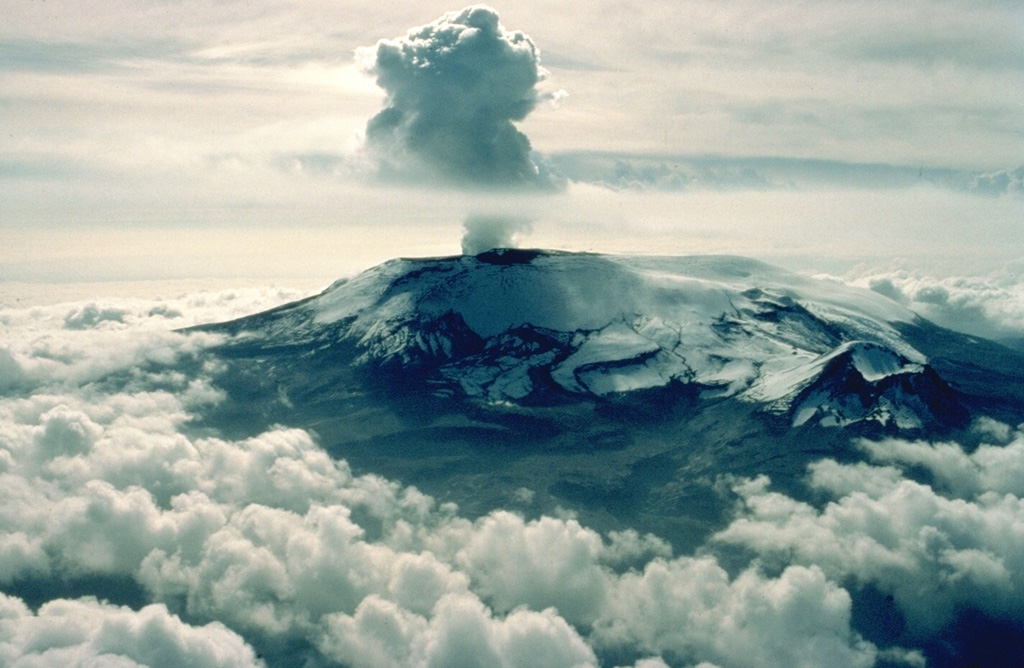The Nevado del Ruiz is a stratovolcano located approximately 80 miles west of Bogota in central Colombia. The volcano, which has been largely dormant aside from minor activity for a couple of decades, has been closely monitored by the Colombian Geological Survey (Servicio Geológico Colombiano, or SGC) over the past few weeks as seismic activity in the region has significantly increased. SGC scientists worry that a major eruption could have devastating effects, as the last major eruption of Nevado del Ruiz in 1985 killed over 24,000 people in deadly pyroclastic mud flows.
According to TeleSUR, the SGC raised the volcanic activity alert level to orange last week after observations of increased thermal and ash output and tremors near the volcano. SGC scientists urge people in the immediate area to evacuate and outlying areas at the base of the volcano to “remain alert”, with Colombian president Gustavo Petro also encouraging citizens to evacuate quickly (TeleSUR, 2023). TeleSUR’s coverage of the ongoing event successfully gives the public a basic overview of information taken directly from reports by the Servicio Geológico Colombiano and Colombian Government. However, it lacks relevant nuance when it comes to evacuation orders and the people who actually live near the volcano.
Meanwhile, journalists Joaquín Sarmiento and Lina Vanegas report that many people living on the slopes of Nevado del Ruiz are refusing to evacuate in an article from Agence France-Presse’s Latin American news division based out of Montevideo, Uruguay. Interviews with some of the citizens, most of whom are farmers, reveal reluctance to leave behind their crops and livestock (Sarmiento and Vanegas, AFP, 2023). According to presidential advisor Luis Fernando Velasco, the government is working on a plan to relocated thousands of livestock in order to ease farmer’s fears of losing their valuable resources (Sarmiento and Vanegas, AFP, 2023).
TeleSUR’s coverage of the evacuations comes off as detached and sterile, as it covers the fact that evacuation measures are being put into place, but gives no information on the communities that will inevitably be most affected if a major eruption occurs. Without the testimonies of Colombians living near the volcano, it is easy to think that anyone refusing to evacuate is being ignorant and overly stubborn. Sarmiento and Vanegas’ article combats this by talking directly with famers who’s livelihoods will be affected by having to flee from their homes and crops. Their article humanizes the people most at risk of being harmed by an eruption.
These two distinctly different ways of reporting on Nevado del Ruiz reveals an important aspect of Colombian life. Across Latin America, there is a drastic class difference between people living in rural areas (such as near the volcano) and living in urban areas. The people living near Nevado del Ruiz are members of the poorer working-class, and while a more urban-based member of the upper-class can imagine leaving their career behind to save their life, the farmers cannot. To leave behind their crops and livestock and risk them being stolen or destroyed by the volcano would result in severe financial loss that could render them jobless or homeless. To them, the risks of dying in a volcanic eruption and losing their entire farm and surplus of resources are equal— both result in them losing their lives.
Sources:
TeleSUR article: https://www.telesurenglish.net/news/Colombia-Seismic-Activity-Of-Nevado-del-Ruiz-Volcano-Increases-20230406-0004.html
AFP article: https://www.france24.com/en/live-news/20230408-as-colombian-volcano-rumbles-to-life-villagers-resist-evacuation
Image: https://volcano.si.edu/gallery/ShowImage.cfm?photo=GVP-04333
